The Butterfly
By Chris Woollams, founder CANCERactive
“Chris. It’s awful. Catherine’s got a brain tumour.”
Eight words that have changed the lives of so many people.
There is a theory that the effects of a butterfly flapping its wings in Hawaii can be felt in London.
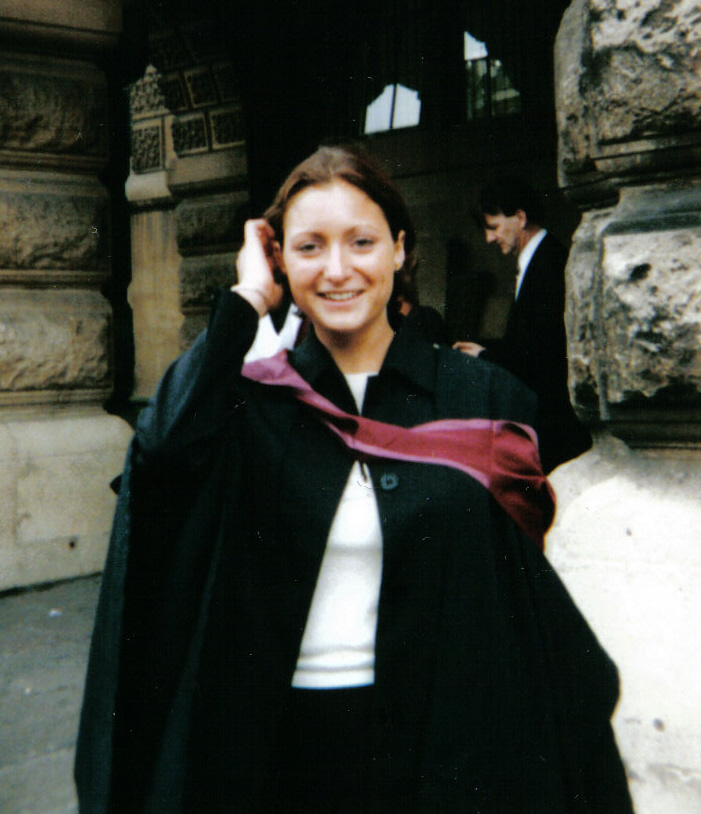 Catherine Woollams was just such a butterfly. Aged 22, she had it all. Intelligence, good looks, a science and law degree from Bristol University, a great boyfriend and a job at Vogue. Oh, and a terminal brain tumour
Catherine Woollams was just such a butterfly. Aged 22, she had it all. Intelligence, good looks, a science and law degree from Bristol University, a great boyfriend and a job at Vogue. Oh, and a terminal brain tumour
It’s one of God’s little games. Before you come to Earth, everyone is allowed to pick 6 cards from the good things pack, but you have to take three from the bad things pack too. We’re here on Earth to learn.
But was this Catherine who was learning something, or a trial for those around her? I know that when her mother took her to Brazil to see John of God, she opened her appeal to him by saying, “I have brought Catherine here to see what you can do for her”. He replied, “No. She has brought you”.
From the very second those original eight words finished, I knew my wonderful daughter was dead. Yet I’m no pessimist, quite the opposite. Within four days the excellent surgeon was cutting into her skull and putting his scalpel into my baby’s brain. Can you imagine the horror? I could still remember vividly Catherine in her red baby grow; ‘Superbaby’, we used to call her, for she was everything you could want in a child. It was all so very, very hard.
At the time, I wrote to another Dad who was losing his daughter to melanoma. We’re a special club. Only we know the horrendous costs of admission.
Yet, I was never sorry for myself, only for poor, darling Catherine. A few days after the operation, the truth was out: Grade 4 Glioma. Look it up on the Internet it says you’re dead. No hype, no hope. Dads like to think they can protect their children from all the world’s atrocities. Now Catherine could read about her own forthcoming death on the web.
The drugs don’t cure, the physicians are impotent, the cancer spreads throughout the brain, your intelligence withers and with it your senses. For the last six weeks of her life, Catherine couldn’t even see, although she pretended she could, so that those around her wouldn’t be troubled. You end up in a hospice lying in your own excrement thanks to the cocktail of morphine and drugs they give you to take your pain away. If there could be an advertisement for cancer prevention, then this is it. And how did my darling Catherine feel when she awoke at four in the morning during those first few weeks after diagnosis? Poor baby.
There’s no such thing as coincidence
Back in 1972, I’d left Oxford University with a biochemistry degree, choosing to go into advertising rather than become a doctor, much to my mother’s consternation. 22 years later I sold my advertising companies, with more than enough money to retire. My interest in health had always been strong so I started my new life by studying nutrition, body energy, Reiki and health and fitness, simply for self-amusement; or so I thought.
Amazingly, about 5 years before my retirement an old man in Hong Kong, with no knowledge of me, had prepared my Numerology chart. I read it with a large pinch of salt. He predicted that I would become rich and successful in my chosen profession, have a number of years off, but then I would have a second career, this time in health which would bring fame and fortune, at even greater levels than my first!! I’m not sure about the fortune part since I have made up my mind to do all of this work for free – let’s just say I’m putting something back into the world after my years of capitalism. But was it really a coincidence that I brushed up my health credentials?
"I’m not interested in cancer; I’m interested in living"
From the moment Catherine’s cancer was diagnosed, my personal gearbox clicked into overdrive. I spoke to experts in London, France and America. The top brain tumour specialist in the world, Dr. Friedman at Duke University Medical Center in Carolina, even rang me back after finishing with a patient.
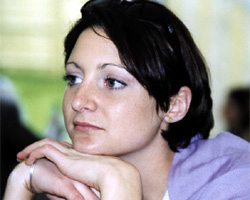
But they all said the same thing: Surgery. Radiotherapy. Chemotherapy. Death.
Ever more determined, I started reading avidly, scouring the Internet and talking to complementary and alternative therapy experts. I wrote a diet plan for Catherine, even buying the foods and supplements and taking them round to my ex-wife’s home where Catherine was staying. Catherine embarked on courses of cranial osteopathy and hands on healing, plus yoga and exercise classes. Unfortunately, divorce books don’t have chapters with advice on coping with terminal illnesses in your children. My ex’s new husband told me in no uncertain terms that no one was interested in my mumbo jumbo.
Catherine’s oncologist was a troubled soul. How do you fight a war when you have no weapons? Even the mighty Lancet stated that the drugs didn’t work. There was no cure.
“What exactly do you think radiotherapy will achieve (apart from numbing her senses)?”
“That US drug you want to try on my baby - isn’t that the one that has just failed its clinical trial?”
You’ll understand I wasn’t the most popular person in the St Thomas’ oncology department.
By a quirk of fate, friends of friends were in prominent positions at St Thomas’ Hospital so we knew that the prognosis was dire: 6 months maximum. All the oncologist would say to me was, “Don’t worry. We’ll give her a good summer.”
His other memorable line (uttered to Catherine in front of us all) was “We may not have the drugs to cure you but we do have drugs to make sure you have a relatively painless death”. Where do they get taught this stuff?
But, then the inevitable didn’t happen. At 6 months Catherine was alive and kicking. And with every three month scan she improved further, easily passing the 18 month ‘record’ that St Thoma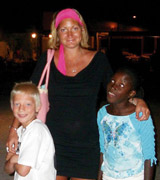 s’ Hospital had for this disease. My contacts said that behind the scenes there was a grudging respect for what we’d been doing. Catherine, herself, was a force to behold. Disciplined, wise, always caring of others, never complaining; a curious mixture of resignation and determination. I only ever saw her cry once, prior to radiotherapy, when she simply wanted to know the unknown, ‘Why me?’
s’ Hospital had for this disease. My contacts said that behind the scenes there was a grudging respect for what we’d been doing. Catherine, herself, was a force to behold. Disciplined, wise, always caring of others, never complaining; a curious mixture of resignation and determination. I only ever saw her cry once, prior to radiotherapy, when she simply wanted to know the unknown, ‘Why me?’
We’d learnt so much in such a short time. Indeed, I still learn something new every day. I’m sure all newly diagnosed cancer patients want to find out as much as possible, as fast as possible; especially those with just six months to live.
Two top oncologists suggested I write down what I had found out. Catherine had left the book reading to me. She found them all too negative, complaining about the drugs companies or the Government, when patients just want to be told information that could improve their personal chances of beating the disease. Who needs politics when they fear they are dying?
Catherine suggested a magazine with easy-to-read, easy-to-use articles, information and tips on all the things a patient might do to increase their own odds of survival. “I’m not interested in cancer. I’m interested in living”, she exclaimed.
You don’t lose your mental capacity when you develop cancer
And so I wrote ’Everything you need to know to help you beat cancer’ and we launched the magazine ’icon’ (Integrative Cancer and Oncology News) to try to help other newly diagnosed people with cancer short-circuit the six month’s learning curve. We don’t dwell on the problems or the negatives. And crucially we understand that people don’t lose their mental capacity the moment they are diagnosed! They don’t suddenly become stupid or vulnerable as people called skeptics like to make out, trying to push them to accept a life where only doctors know what’s good for you. We try to help people increase their knowledge with Intelligent Information - there is so much out there, if you know where to look, have a biological science degree to understand the technical stuff, and have the time.
For me, it’s about self-empowerment. People know their doctor is not omniscient. Unread copies of the Lancet pile up for months in the GP’s surgery. He doesn’t have time to learn it all. But patients know they can search the web themselves, and visit complementary cancer centres. They can build Complementary and Integrative cancer programmes for themselves (CIM) changing their diet, taking supplements, exercising. They want to do something to increase their personal odds of survival. Why wouldn’t they?
But back in 2002 it was just plain hard work.
Both Catherine and I were becoming increasingly frustrated. If the drugs don’t cure and official medical orthodoxy has so little to offer, why do they so belittle and decry complementary and alternative therapies that show promise? After all, especially with brain tumours where a blood-brain barrier is designed to stop chemicals passing across it, surely, logically, there would be more potential in natural compounds? We found so much information in our searches. For example, preliminary research had shown just such a potential with natural compounds including Chokeberry, Coenzyme Q10, Fish oils, Curcumin, Choline and Echinacea. But could the research team get the funding to conduct the required clinical trials? No, of course not. Big Pharma is just not interested; there’s no profit in natural compounds. They can’t be patented.
Catherine met Dr Contreras of The Oasis of Hope, Mexico, when I interviewed him for icon in Southampton. He told her that B-17, for which he has become infamous, doesn’t work with brain tumours. In reality, he uses the full range of chemotherapy and radiotherapy at his clinic plus nutrition and other complementary therapies. He also pursues new alternative therapies and one, ozone therapy, had started to show promise - not as a cure, but it might buy another six to nine months life. But when Catherine told her London oncologist that she was contemplating going to Mexico, his answer was simple. “You know people have gone to Mexico and have never come back”.
Catherine had heartburn. Her oncologist made her list all the supplements she was taking. When she reached apricot kernels (a source of natural B-17) he exclaimed, “That’s it. It contains cyanide.” Not surprisingly when she stopped at her mother’s insistence, the heartburn did not go away. Of course, the heartburn had nothing to do with the oncologist’s cocktail of drugs, steroids or anti-fitting agents, did it?
I remember reading an article about how glucose was the favourite food of cancer cells and almost the only food they used. Cancer cells were inflexible, whereas healthy cells were flexible and could use other fuels like fats. And this is especially true about brain cells. But then, I knew most of that from my Oxford University days. I put it to the oncologist that maybe a route was to try and reduce her blood glucose levels. (After every operation, Catherine’s hospital diet was ice cream and Ribena). The oncologist turned to a colleague and, laughing, he said “Chris wants to cure Catherine by stopping glycolysis!” As if anyone had ever heard anything so stupid.
They laughed. Can you believe it? They laughed at me!
Nowadays I know from cancer patients who talk to CANCERactive that this attitude in UK oncologists is quite common practice. But how does this big-headedness, closed-mindedness, this not-invented-here attitude, let’s-mock-the-patient attitude, help a person with cancer? Oh, for an enlightened oncologist.
And, frankly, with hindsight, the doctors were WRONG. Read the postscript to this piece and you will understand. And fifteen years on, I know far, far more than I did then. But shouldn’t they have been fifteen years ahead of me, a Dad with a 25-year old Oxford University Biochemistry degree? After all, it is their ‘special and chosen subject’; their profession?
Catherine did extremely well for nearly three years. Sadly, flushed with all this success, Catherine returned to the more normal life of a 24 year old, going back to smoking and drinking, and stopping the exercise and supplements. What does go through the mind of a young women when told she has ’beaten’ the unbeatable?
The cancer returned.
Drug failure. Twice
Best practice and orthodox medicine kicked in: Temozolomide is a drug about which there was an incredible fuss in the UK after NICE refused initially to allow (pay for) its UK use.
But this wonder drug is not so wonderful. If you read the original research published in the March 10, 2005 issue of the New England Journal of Medicine, the drug extends life by an average of 2 months and 6 days. And it doesn’t even work on 80 per cent of patients. Then there are the side-effects. One round of Temozolomide flattened Catherine’s immune system so badly she could not repeat the treatment.
“Don’t worry. We have a triple drug combination called PCV with a 75 per cent success rate”, my ’ex’ and Catherine were told (I wasn’t allowed to see the oncologist anymore; I was trouble).
“75 per cent success at what? Surviving 5 years? Surviving 2 minutes? Living until you’re 90? What?” I asked. You can see why everyone thought I was trouble.
No answer.
And here I start to show my anger and frustration. And my sadness for the cancer patients of Britain. It is borne out of dreadful double standards and unfairness. The very same people who criticise complementary therapies under the banner headline of ‘No Clinical Trials’ should put their own houses in order first and ask themselves whether they really think the drug clinical trial results they praise so much are worth the paper they are printed on. Certainly the FDA in America do not. They have publicly stated 42% of Clinical Trials are flawed. Dr. Marcia Angell of Harvard Medical School and the retiring editor of the New England Journal of Medicine went further and said half the results of Clinical Trials were false! Researchers at Kings College, London said that few drugs launched in the last five years have any real survival benefit!
Procarbazine, Carmustine and Vincristine have each been tested individually, and as a triple agent with brain tumours in 1994 clinical trials with 24 people. Yes, 24 people. 75 per cent did see a response of some sort. I won’t go in to what response or how long it lasted, as the data is almost non-existent. Far more worrying is the Cedars-Sinai review on 7 such clinical trials: For example, in another 1996 trial (this time with a massive 32 patients), two thirds see a significant negative response. They became ’more ill’.
The research also stressed it was important to incorporate a strict diet regime when using PCV because some foods interact badly with the drugs causing severe health problems (apparently eggs and dried meats cause a bad reaction with P); and that the overall health risks in using these three drugs together are ’not insignificant’.
Was Catherine told of the diet restrictions? Don’t be silly.
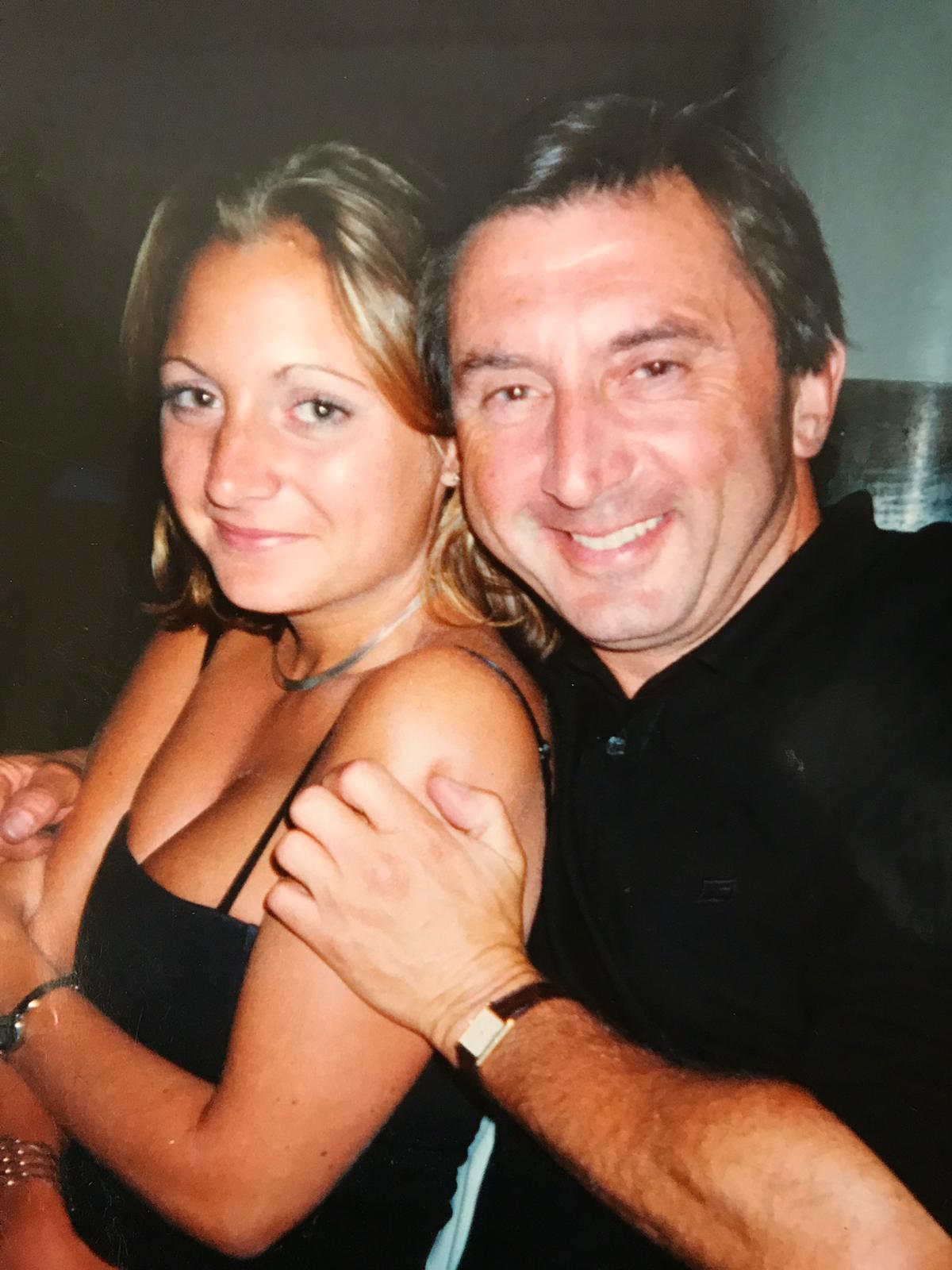
Again, Catherine had her white cells so destroyed by PCV that a second round of the cocktail was impossible. Even the immune system injections she was given failed to resurrect the white cell count. However, my mumbo jumbo of Cat’s Claw, Echinacea, Astragalus and Curcumin did bring them back to life; the hospital were joyous about the high white cell count. But even this ’test’ - your white cell count as a measure of your immune strength - is erroneous. As we later found out through independent blood tests, she had absolutely no Natural Killer cells left. The drugs had destroyed them. She was fighting a cancer without a hope.
Catherine was now dying. And those around her fervently believe the drugs made it a whole lot worse. How do you fight a cancer when you have no immune system?
I took Catherine to a metabolic therapist in Harley Street and paid a fortune for analytical blood tests. Incredibly in three and a half years, no blood test had ever been taken by her team of oncologists. Worse, the tests showed that she had both a fungus (yeast) and a virus. “There’s no point in giving her any drugs for these, as the drugs would probably kill her,” said her oncologist, without a hint of irony.
The butterfly? Well she flapped her wings in London and the effects have been felt around the world - now people in Australia, India, California and elsewhere have real information, without bias, without vested interest, without direct or indirect funding from big Pharma, vitamin companies or anyone with money to be made from their fate.
At CANCERactive, in our magazine and on our website, we will continue to pass on quality research that helps. Our aim is to bring information to people that they can use today to increase their personal odds of survival.
We will not talk about death. Why? Because we believe, today, all cancer is curable. And if it cannot be completely ’cured’, it can be held in remission for an extremely long time. Those are not our words but those of Dr. Henry Friedman, one of the world’s top brain oncologists.
We tell our own, positive tale. We provide the very latest evidence-based information from around the world, be it on drugs, vitamins or yoga; orthodox, complementary, integrative and alternative therapies. If the research says it works, we tell you. If the research says it doesn’t, or the side-effects aren’t worth the risk, we tell you that too. All so the patient can make more informed personal choices, and stand a better chance of beating the disease.
The CEO of CancerBACKUP (as it used to be called before MacMillan Cancer Support took it over) told me that icon magazine was brilliant but ten years ahead of its time.
“Why?”
“Well it’s so democratic. It lays out all the information so patients can just pick and choose.”
Of course it does – that’s the whole point!!
Scott Peck in his book ‘The Road Less Traveled’ said that tackling our problems was how we grow up in life. I know we have all grown up. My ’ex’ is now a qualified Reflexologist, her husband goes to the gym and health farms. They have new diets and new healthy lifestyles. So much for mumbo jumbo.
Me? Well I suppose I just want to help people give themselves the best possible chance of beating this awful disease. I want to help people take some control back into their own lives; to help increase their knowledge; to help them make more-informed personal choices. I’ve found out so much, I know where to look: I’ve read the research that experts say does not exist. And I want to pass it on. It’s about fairness, people’s right to know. It’s actually about telling the Truth!
It’s what Catherine wanted. The Whole Truth. It’s the patient’s right to know all the options so they can make the best, most-informed choices for their own lives.
The butterfly still flaps her wings.
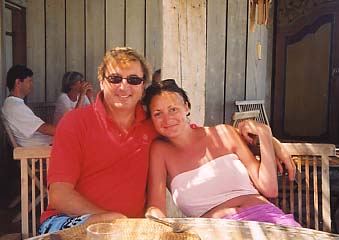
************************
Postscript - twelve years on
In 2012, the American Cancer Society produced a report (which has subsequently been endorsed by America’s top cancer body, the NCI) stating that, since 2006, there has been an ‘explosion’ in research into complementary therapies) and there is ‘overwhelming evidence’ that complementary therapies such as diet, weight control and exercise can increase survival and even prevent a cancer returning.
Their 2017 report showed that a good diet and exercise programme could increase survival bt 31% and reduce death by 42% over a 7-year period.
Another research study in 2012 from the NCI, talked about how a poor diet could cause cancer tumour re-growth, while bioactive natural compounds like resveratrol, curcumiin, piperine, theanine and choline, vitamins A and E, genestein and EGCG from green tea could all prevent that re-growth. The NCI lead researcher even said these could be taken as ’quality supplements’!
Then there was research from UCLA and others that showed Stress Management Techniques ‘significantly improved survival’. Those techniques highlighted that people with cancer have higher stress hormone levels, and shortened telomeres. A combination of disciplined diet (a colourful, plant based diet), fish oils, yoga, meditation and counselling seemed to help enormously in the clinical studies.
The researchers I mentioned at the start of this piece, eventually did find some funding to test the natural compounds and have again shown chokeberry and curcumin can help fight a brain tumour.
Sugar restriction and brain cancer
But one of the biggest developments in cancer has come in the area of sugar restriction - The Oncologist magazine in 2012 covered research on Calorie Restriction (by cutting sugar consumption) and increased drug performance; and featured it in their editorial. Also from America it has now been shown that fasting significantly improves the success of chemotherapy and radiotherapy, we report on this elsewhere. Sugar is a potent poison in the brain, and a driver of brain tumours.
Sadly, Temozolomide and Dexamethasone, both regularly used with brain cancer, put blood sugar levels up! Research on metformin (which lowers blood sugar) shows it helps survival times.
But perhaps the most telling was a conversation between my ’ex’ and Catherine’s oncologist when he claimed they now had patients with GBM living almost as long as Catherine. "How are you doing that?" she asked, expecting an answer about a new drug. "We have people on the Atkins’ Diet", he said.
Atkins’ Diet? You remember that don’t you. Absolutely no carbohydrate.
That’ll stop glycolysis, then.
For the record, in one week alone in 2017, we received emails from 4 people who were completely cured of their cancers thanks to CANCERactive.
The butterfly flaps her wings.
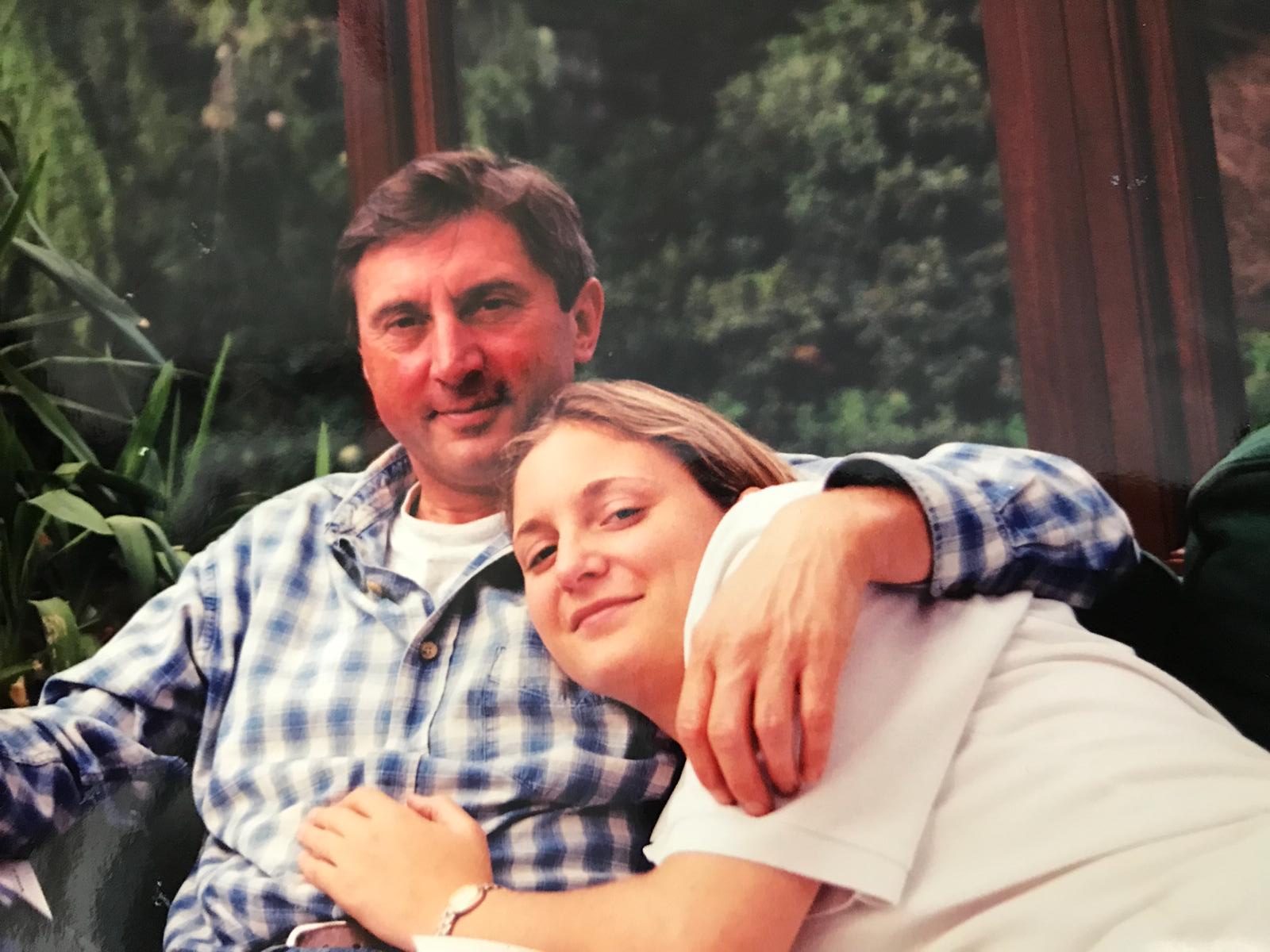
Chris and Catherine Woollams
Catherine Woollams
August 31st, 1978 - 2006, I don’t want to know when.